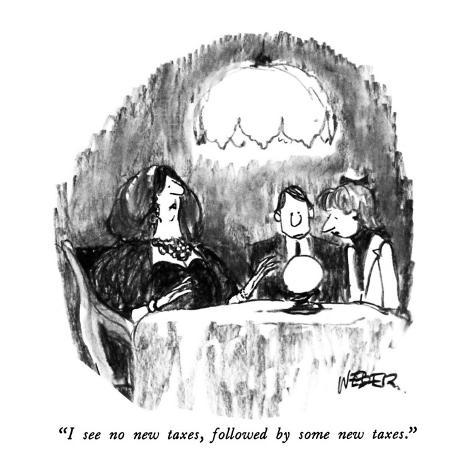
Excerpt: "The reason that unemployment is high clearly has nothing to do with taxes... There is simply no evidence that cutting taxes at the present time will do anything to raise employment."
Taxes and Employment
By BRUCE BARTLETT
Bruce Bartlett held senior policy roles in the Reagan and George H.W. Bush administrations and served on the staffs of Representatives Jack Kemp and Ron Paul. He is the author of “The Benefit and the Burden: Tax Reform – Why We Need It and What It Will Take.”
Since the beginning of the economic crisis, Republicans have insisted that tax cuts and only tax cuts are the appropriate medicine. They almost never explain how, exactly, this would reduce unemployment other than to say it worked for Ronald Reagan in the 1980s.
TODAY’S ECONOMIST
Perspectives from expert contributors.
If one were to take the Republican argument seriously, the linkage would have to be via the tax wedge. This is the principal means by which the government affects employment, according to the Republican economist Arthur Laffer. The tax wedge is the difference between the cost to an employer of employing a worker and the after-tax reward that the employee receives.
When taxes go up, the tax wedge gets larger, costing employers more to hire workers at a given after-tax wage. Therefore, it is theoretically possible that a tax cut could increase employment by reducing the tax wedge and allowing employers to hire workers at a lower cost without reducing their after-tax wages.
This is a perfectly reasonable theory. There undoubtedly have been times when the tax wedge was increasing because of bracket creep or legislated increases in payroll taxes that may have had a negative effect on hiring. Whether this is the case now, as Republicans assert, is a question for analysis.
One problem with the tax-wedge theory is that taxes are at a historical low as a share of the gross domestic product. According to the Congressional Budget Office, federal revenues will be 15.8 percent of G.D.P. this year. The postwar average is about 18.5 percent, and taxes averaged 18.2 percent during the Reagan administration; indeed, at their lowest point in 1984, federal revenues were 1.5 percent of G.D.P. higher than they are now.
One problem with the tax-wedge theory is that taxes are at a historical low as a share of the gross domestic product. According to the Congressional Budget Office, federal revenues will be 15.8 percent of G.D.P. this year. The postwar average is about 18.5 percent, and taxes averaged 18.2 percent during the Reagan administration; indeed, at their lowest point in 1984, federal revenues were 1.5 percent of G.D.P. higher than they are now.
Another problem is that there hasn’t been a significant tax increase affecting average working people since 1983, when Reagan raised the payroll tax rateto 15.3 percent from 13.4 percent (employer plus employee). Contrary to popular belief among Republicans, there have been no significant tax increases during the Obama administration. In fact, there have been tax cuts aimed directly at workers.
The making-work-pay tax credit consumed some 40 percent of the budgetary cost of the 2009 stimulus package and reduced taxes for every person or household with a positive income-tax liability and an income below $75,000 in 2009 and 2010. In 2011 and 2012, the making-work-pay credit was replaced by a temporary 2 percent cut in the payroll tax rate, reducing taxes for every worker.
The reason that unemployment is high clearly has nothing to do with taxes. Consequently, there is no reason to think that reducing taxes further will do anything to raise employment by reducing the tax wedge.
Additional evidence on this point comes from a new study by the Organization for Economic Cooperation and Development on taxes paid by average workers in its 34 member countries. The data below are for a single worker without children.
As one can see, the United States is a low-tax country with a total tax wedge of 29.5 percent. Three-fourths of O.E.C.D. countries have a larger tax wedge on average workers.
I have also included the latest data on the percentage of workers employed as a share of the working-age population. I think this is a better measure of the health of the labor market than the unemployment rate, which goes up and down for a variety of reasons unconnected to taxes.
Here, too, there is little evidence that taxes affect employment one way or another. Almost half of the countries with a bigger tax wedge employ a larger percentage of their working-age populations than the United States does, and more than half of those with a smaller tax wedge have lower employment ratios.
One argument Republicans could make in response is that the tax system has been in flux for the last 11 years. The Bush tax cuts were all set to expire at the end of 2010 and then were extended at the last minute for two additional years. The making-work-pay credit and subsequent payroll tax cut were also enacted temporarily.
One might reasonably conclude that businesses are unlikely to react to temporary tax changes and need some idea of the long-term tax environment to really affect their hiring actions.
But Republicans designed their tax cuts to be temporary in the first place; they rejected the idea of a bipartisan permanent tax cut because that would have required compromising with Democrats.
The latest Republican tax cut proposal, to reduce taxes for all businesses with fewer than 500 employees, no matter how profitable or big in other respects, would be in effect for only one year.
This is a key reason that the Republicans’ own committee report (see Page 20) said the legislation would have a negligible effect on employment.
There is simply no evidence that cutting taxes at the present time will do anything to raise employment.


No comments:
Post a Comment